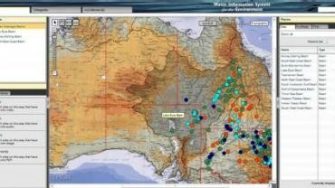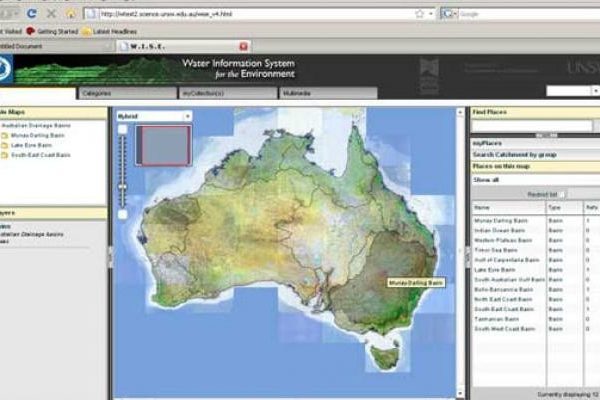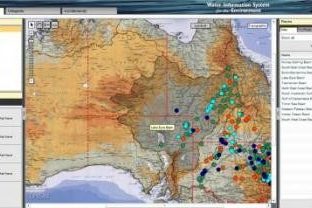
The WISE (Water Information System for the Environment) product provides access to water related information for an entire catchment. It gives an overview of the catchment, its rivers, wetlands, fauna and flora, National Parks and towns by creative display of text, maps, videos, photographs and an animation of river flows. It also highlights key issues and provides primary source information for the catchment on these issues. With powerful search routines, people find how water information varies across the catchment and for each wetland, river or creek in the catchment. Publications can be collected and abstracts read to determine if the publication is relevant to their interests. For the first time, the WISE software allows the best available information for a catchment to be easily located and applied to relevant natural resource problems.
Launch WISE (beta version)
The software has been successfully developed for fifteen catchments in NSW and Queensland.
Advantages of the WISE databases include:
- Provides a solution for information management at a catchment scale, assisting with capacity building.
- Improve the management and dissemination of existing information on water and the environment.
- Provides all the up to date published information on water quality for entire catchments so that all people may access it.
- Provides necessary information for Catchment Action Plans, setting of targets and investment strategies.
- Increased community awareness of biodiversity, river and wetland management.
- Instil community ownership of the project through recognition of local issues and areas.
- Strengthen community partnerships and involvement in aquatic biodiversity conservation.
- Provide educational, textural and multimedia material suitable for use with primary and secondary schools.
- Recognise and promote the cultural importance of aquatic resources to indigenous users and ensure ecologically sustainable use.
- Provide an extensive bibliography to be used for all future research programs and make scientific literature more available.
- Identify areas where there is a lack of information to channel limited resources where they are most needed.


